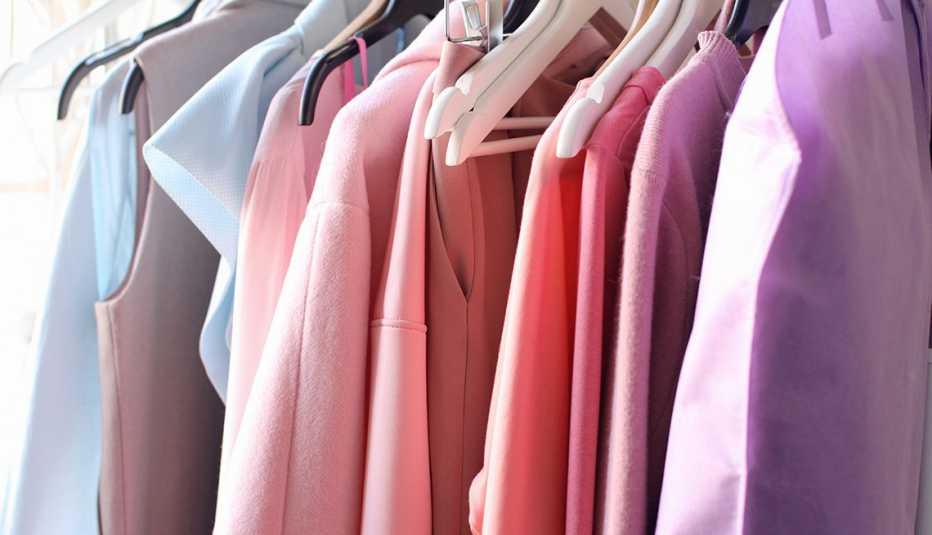AARP Hearing Center
Need a flashlight to find your good velvet jeans, kitten-heeled party shoes and the vintage gold-chain belt stashed somewhere in your closet? That used to be me, too! Yes, I have read Marie Kondo's best-selling book The Life-Changing Manga of Tidying Up, and while I'm sure reducing one's wardrobe to only the things that “spark joy” works for some people, I'm not one of them. For many women age 50-plus (like myself), any paring down the closet(s) to a perfect, tidy small group of clothes and accessories does not bring happiness ... more like anxiety. Where's my stuff? My history? My memories? My choice? No one wants to be a hoarder, but getting dressed shouldn't require a GPS, either. Here's my tried-and-true fashion editor declutter guide to your closet.
1. Give the closet itself a DIY makeover. First make your closet a brighter, cheerier place. There's no need for a pricey company that designs customized racks and shelves. Just take everything out. Give the interior a good dusting and vacuum. Paint it your favorite good-mood color, such as butter yellow, peach, pale pink, apricot, powder blue — nothing too dark. Add extra lighting so there are no dark corners, either. Stick on battery-powered LED lights (check Amazon.com) that work with a touch-tap to turn on and off ... no electrician necessary. The latter are life changers , trust me.
2. Figure out why there's a jam. Fifty-plus is a time of change and transition that affects what you wear and keep. Have you downsized from a house with storage to a condo short on closets? Do your clothes and accessories not fit your current (be honest!) body, life or style? Are you widowed or divorced and dating again? Has your social life amped up with volunteer work, clubs, committees or back-to-school classes? Did you move from one climate to another, from an office to working at home, from an urban lifestyle to a suburban one? Often, we hate to let go of stuff because you never know what's around the corner. Adjusting to an accelerated lifestyle or a more laid-back one is a definite closet U-turn. Check these questions when you're deciding what to save, donate or toss.
For style advice and more, get AARP’s monthly Lifestyle newsletter.





































































